See, reach and use parts of the charging unit
Once the charging unit has been installed in a suitable setting, people need to be able to see, reach and use every part of it.
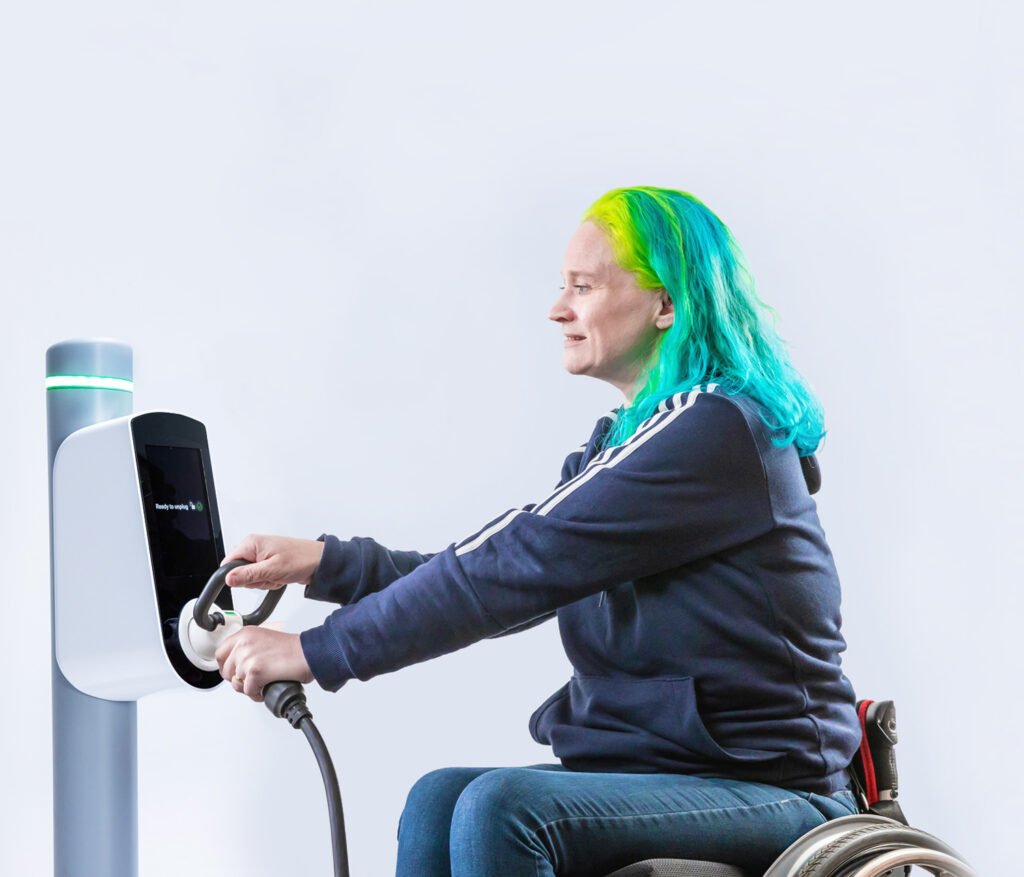
Parts of the charging unit
Charging units vary, but can include features such as:
- Cables
- Connectors and their holders
- Sockets
- Screens
- Lights and illuminated signs or labels
- Buttons
- Contactless payment pads
All of these features need to be seen, reached and used by both seated and standing users. See our pages on cables, connectors and sockets for more information about these features.

See the features
People should be able to see and recognise each feature easily.
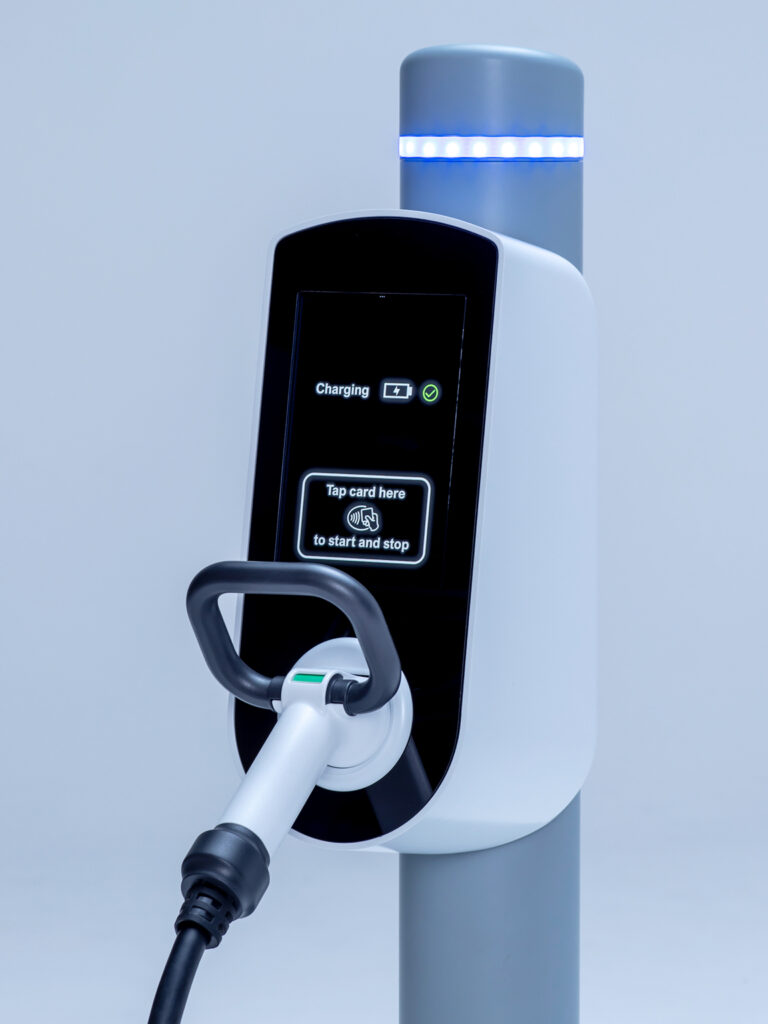
Make sure each part of the charging unit is recognisable or well-described so that the user knows what it is.
For example, a contactless payment pad is often a black box with a raised black symbol on it which can be difficult to see. Where contactless pads are used, consider making them easy to see and recognise by using good contrast and labelling.
Remember that someone using the charging point may not be the driver, so do not assume that the user will have good enough vision to drive. Equally, drivers who need reading glasses that are not required for driving may not have these with them.
“I like not needing my reading glasses to see the screen”
Well-designed labelling can help to make the parts of the unit easily recognisable. Make sure that labels are easy to read by using high contrast and large text and symbols.
Put the labels close to their features so that it is clear what they are referring to. If there are similar features on the unit (such as different types of similar connector), describe each one clearly to help the user to choose the right one.

Where screens are used, make sure that they can be seen from seated and standing positions and are visible even in bright conditions. This may require measures such as positioning the charging unit away from bright sunlight, ensuring adequate screen brightness, shielding the screen, and using screens that do not degrade in strong sunlight.
Combining screen tilt with the right screen height can make the screen accessible to more people – see PAS 1899:2022 (opens in a new window) for more about screen height and tilt.
Other illuminated parts, such as lights and illuminated signs or labels should also be visible in bright conditions.
Reach the features
All parts of the unit must be reachable by standing and seated users. Some people cannot extend their arms fully when reaching because of reduced strength, pain or fatigue, or their use of walking aids.
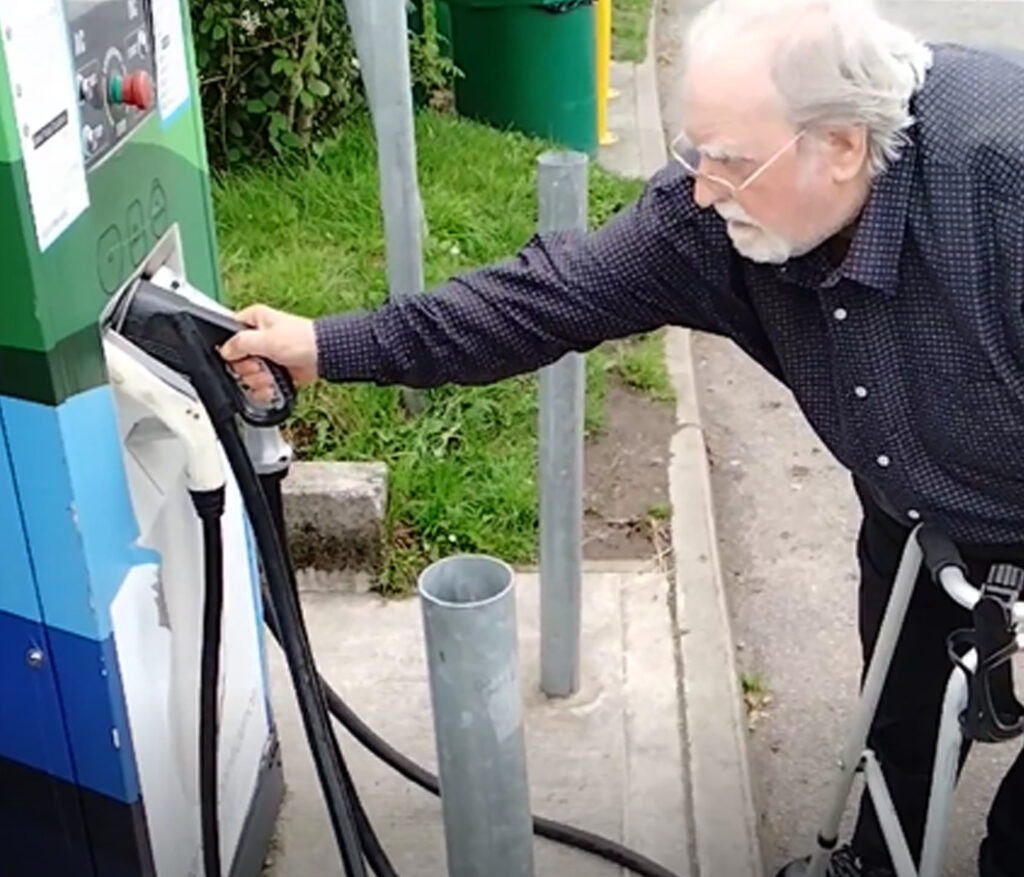
For example, a wheelchair user with a shoulder injury may not be able to reach as far forward as a standing person with no physical disability, and someone using crutches or a walking frame may have limited reach.
The elements of the charging units must be reachable horizontally (reaching forwards or sideways) and vertically (up or down from the person’s current position).
One easy mistake to make is to design all of the elements of the unit to be at the correct heights and then to install the charging unit up on a kerb or concrete plinth so that the features are then too high to reach, so bear in mind that each person must be able to reach all of the elements from their ground level once the unit is in place.
Units that are set too far back on a kerb can cause similar problems.
“I don’t like it when chargers are up on a kerb and the socket is on the side of the unit – it’s almost impossible to reach from my wheelchair”
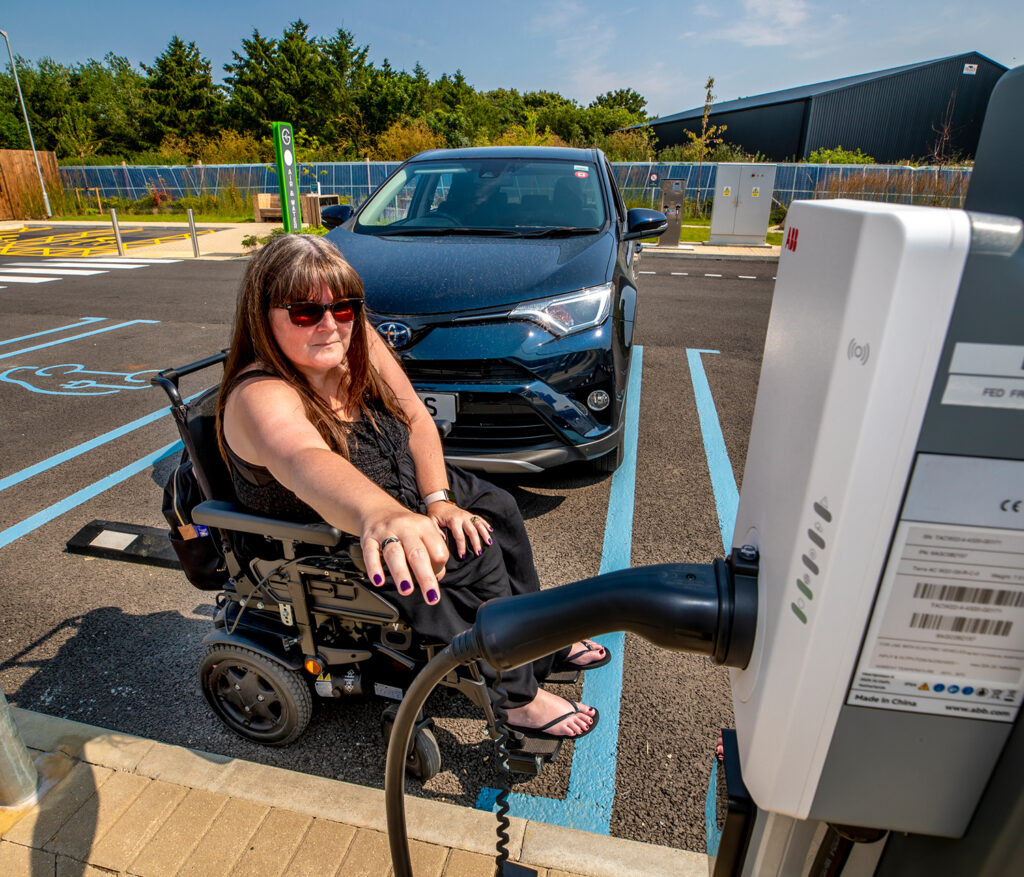
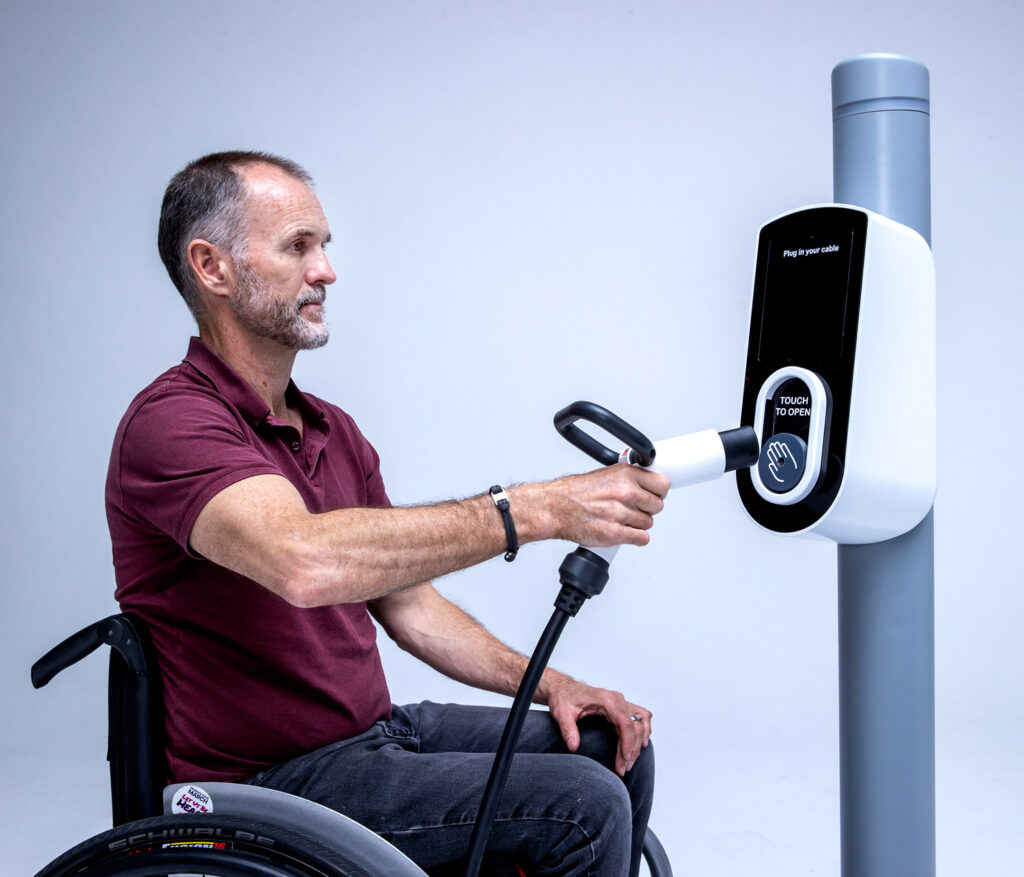
When considering a person reaching, think about their possible position. For example, a person using a manual wheelchair may choose a diagonal chair position to reach across with their preferred arm, and someone using a mobility scooter may reach sideways, rather than forwards, to access a charging unit.
Use the features
It is important to remember that the strength and dexterity needed to actively use a feature (for example a connector or cable) may well be more than the person needs to simply reach it. Simply being able to reach a part does not mean that someone can actually use it in a meaningful way.
Actively using parts of the charging unit can involve holding a position (to touch a screen in a controlled way or use a fine grip to hold a contactless payment card against a payment pad) or supporting a weight for a short time (when holding a connector).
This can be difficult for some people, so some proposed maximum forces needed to use some parts of public charging points are provided in PAS 1899:2022 (opens in a new window).
Other people may choose to let go of a walking aid such as a walking stick or crutch when using the charging unit, so consider providing somewhere to support those.

Make sure that all the features require minimal effort to use, and where possible give feedback to show that they have been used correctly. See start, stop and pay for charging for more on this.
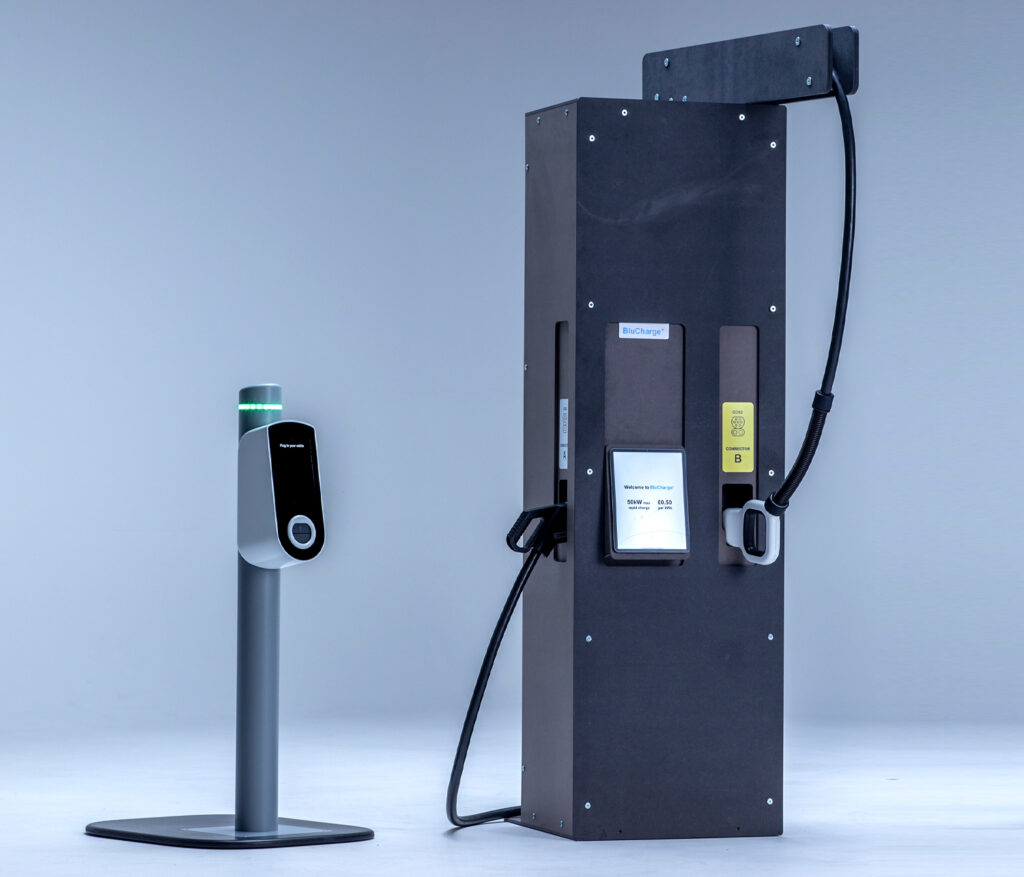
Our charging unit prototypes
Take a look at the prototype EV charging units that we built in response to our user engagement work
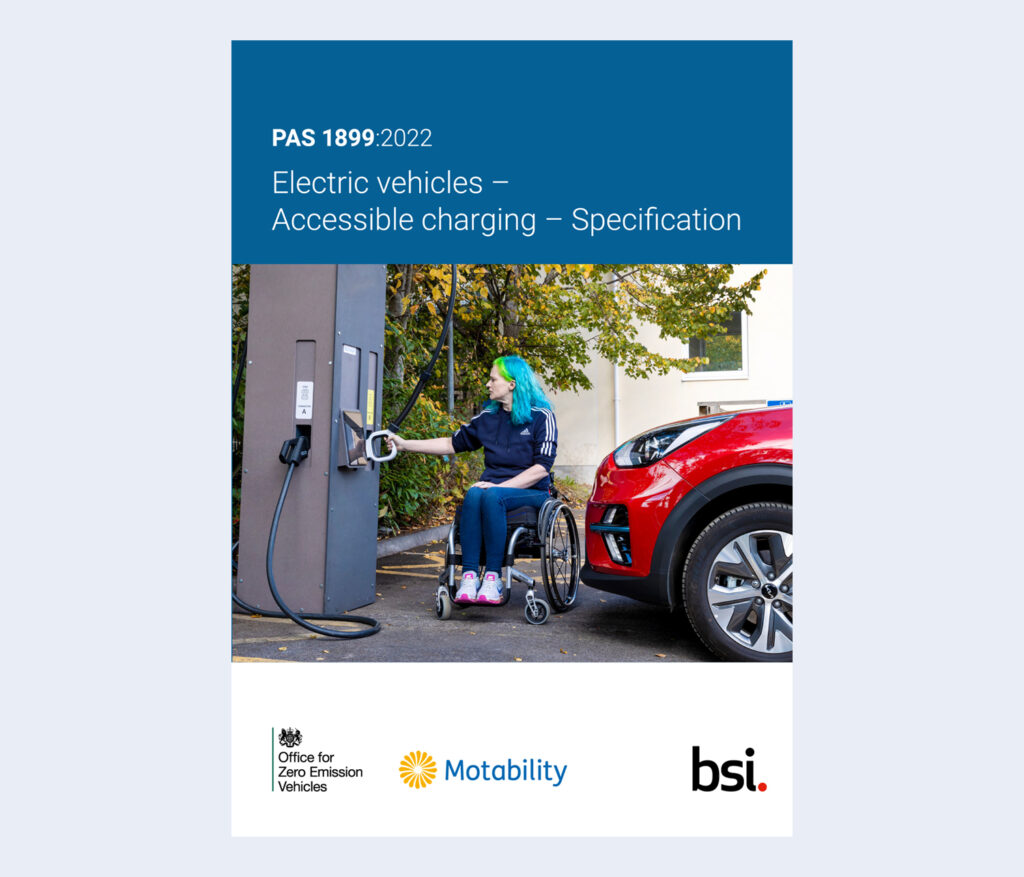
The new standard for accessible EV charging
Take a look at the requirements and recommendations set out in PAS 1899:2022 Electric vehicles – Accessible charging – Specification
Explore our case studies
Our case studies have been drawn together from first-hand accounts that were shared with us by disabled people and those close to them. Each story is made up of insights from several individuals, to share as much of our research as possible and to illustrate the impact of good and bad design on real people.
Download the design guidance
Our design guidance covers signage and information, the built environment and charging an electric vehicle.



